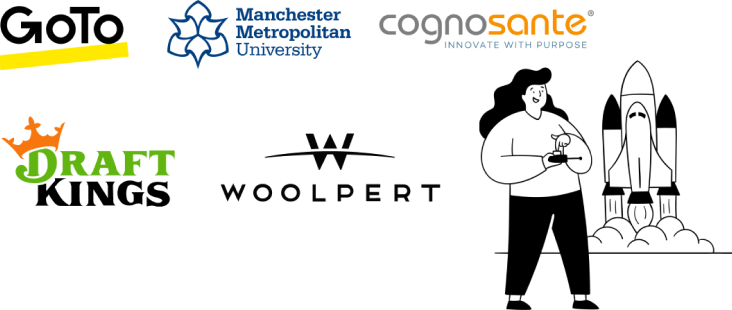
The ROI of Using Chatbot and Automation with Your IT Service Desk

As organizations continue to digitize their operations and embrace new technologies, the role of the CIO is evolving.
One key aspect of the CIO’s role in digital transformation is to serve as a bridge between the IT department and the rest of the organization.
With that said, CIOs also need to address challenges aggravated by the Covid-19 pandemic and the ongoing recession and inflation, so CFOs and companies can combat pressure by reducing operating costs and maintaining profitability.
As a CFO of your business, you are likely implementing cost-take-out (CTO) actions on IT spending, and the IT service desk could be an easy target for companies to reduce their IT spending, but you need to ensure that it doesn’t affect the IT Service desk’s efficiency and performance.
To ensure IT service resiliency as well as high performance, you can follow a few steps to stay ahead of IT help desk risks and prepare for real-time operational restoration.
Evaluate certain aspects of IT service desk expenses, which you can reduce with an effective plan.
1. Four factors to consider that impacting your operational costs or budget
2. Impact of recession on CFOs
Economic Factors
Cost of the problem - Putting a $ value
So, as we went through the problem and challenges, let’s also try to estimate the cost of the problem. For example, what’s costing you for not transforming to an AI-first service desk model?
In this case, we assume that you are a company with 3000 employees, and roughly creating about 5000 tickets per month, having about 20 agents at various levels.
We assume that 60% of the total ticket volume is handled at the L1 level, so these are simple to semi-complex issues that an L1 staff can resolve. And rest of the tickets, due to its complexity, are passed on to L2 and L3 folks.
So, coming back to L1, let’s assume that 60% of L1 tickets are eligible for FCR, i.e., 1800 tickets are L1 eligible, but as you know, not all tickets can be closed on the first call, so let’s assume that, on average, 80% of eligible tickets are resolved, so about 1400 tickets are closed on the first call. And all this takes about anywhere from 20 mins to 4 hrs.
But let’s focus on the cost of this exercise and assume that it costs $15 per ticket for the company.
So as you can see, simple maths tells us that the overall cost for addressing 3000 tickets is 45K, and of which those 1400 tickets cost you 21K per month, so by not having an AI chatbot that automatically resolves those 1400 easily, you have spent 21K. That is one way of reducing the cost.
ROI Estimates
Now, let’s see what would happen if we introduce a chatbot to help us resolve FCR tickets. With a chatbot, the average handle time per ticket comes down to less than a minute, and the average cost per ticket reduces to $3. That means the total cost of resolving 1440 tickets comes down to $4,320, resulting in a 5X cost saving of $17,280 monthly and $207360 annually.
Then you can save 3546 agent hours annually.
What is the ROI for your chatbot or product?
Hard ROI is cost savings that can be visible as early as the first quarter. This also depends on your user adoption. There are a lot of soft ROI as well that can be quantified.
The ROI for your chatbot or product is easy to quantify, and there are some key areas that contribute to it.
Traditional VS Modern Service Desk
So, let’s now see how you can leverage your existing service desk team and yet transform it into the AI-First Service Desk Model.
First, leverage data to train a chatbot, so it can intelligently and contextually respond and address to employee queries.
Second, whilst agents are critical to the service desk, re-balancing the approach with chatbot + agents creates the right mix of skills with cost benefits
Third, use Automation to improve service delivery SLAs. What took for an account to get unlocked in 30 mins now be unlocked in less than a minute using a chatbot.
Imagine how this could impact your SLAs.
Fourth, proactive measures to reduce reliance on calls to the service desk frequently finally, you can create a rich experience with personalization.
3. Get a competitive advantage from Workativ Automation Platforms
Workativ is focused on helping companies automate workplace support and tasks. Established in 2019, we have come a long way, helping companies from different industry in transform their workplace using Woraktiv Assistant and Workativ Automate (Which is due for a release in the next two weeks)
So, Workativ assistant helps companies of all sizes to build conversational AI chatbots with app automation in minutes quickly. This helps companies adopt the AI-first service desk approach. We have helped popular companies like GoTo, Congnisante, and IPONWEB leverage chatbots to modernize employee IT and HR support.
4. Real-World Case Studies
Client - GoTo
Here is a quick overview into a case study of our client GoTo 一 a renowned and one of the leading SaaS companies with more than 3500 employees.
GoTo needed an automated solution that would help them manage all the repetitive tasks such as installing software, resetting passwords, unlocking accounts, and distributing lists for employees with more than 50+ applications.
They knew there was something better out there for them, so they reached out to Workativ for help (and 4 other chatbot vendors)
Workativ ensured that a chatbot would be made available at any given time when an employee needed help with their IT-related issues. Workativ helped the GoTo team to auto-resolve repetitive IT queries, issues, and requests and improve their employee experience.
5. Conclusion
Amidst the economic crisis, it will be inviting to invest in workflow automation through chatbots or sophisticated automation models that help save big on operating costs. For CFOs who want to reduce the economic strain on the IT infrastructure, chatbots and automation platforms can help in fulfilling that ambition by accelerating IT support efficiency and productivity.
The picture is clear here,
It would definitely bring back values to your ROI should you consider automation as your next level high end IT initiates. Look back at all these gains that automation brings to your balance sheet and give it a nod.
In this Blog


About the Author

Deepa Majumder
Deepa Majumder is a writer who nails the art of crafting bespoke thought leadership articles to help business leaders tap into rich insights in their journey of organization-wide digital transformation. Over the years, she has dedicatedly engaged herself in the process of continuous learning and development across business continuity management and organizational resilience.
Her pieces intricately highlight the best ways to transform employee and customer experience. When not writing, she spends time on leisure activities.

